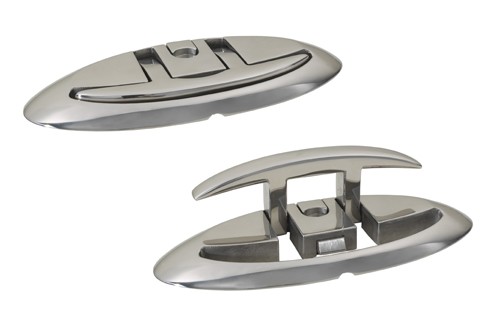Business
What Are Sailing Cleats?

The average sailboat spends a huge amount of time anchored, tied up, moored or even hauled out for maintenance. This in effect means that sailing cleats are in control of your boat when the cold fronts and worst squall lines batter your fleet. In the not-too-distant past, sailors relied on two parallel posts known as bitts that were passed through the deck and fastened to the floor frames, keelson and deck beams. The lines were then secured to ‘‘Samson posts,’’ the nickname given to bitts that alluded to their strength. This trend of securing the line-handling bitts to large structural components of the sailing vessel stemmed from the massive tension loads that would be imparted on tow warps, docklines and anchor rods. Bitts along with schooners and spoon-bow sloops that supported them have largely disappeared and their roles usurped by modern cleats.
Modern-Day Sailing Cleats
Cleats actually have a long history that dates back to the 1400s when the antecedents to modern-day horn-type cleats first arrived on the scene. Eventually bronze and cast iron renditions were bolted to the timber deck planking and incorporated additional under-deck reinforcements as well as load-spreading backing blocks. Modern-day cleats, however, place a lot of emphasis on how energy is dissipated around the points where the cleat is attached. Higher density infills are necessary in areas where the bolts secure the cleat to a cored deck. Some sailboats simply place the cleat near the toerail with the core eliminated and fibre reinforced plastic (FRP) skins of the deck brought together. This approach is usually adequate if the laminate is thick enough or if it’s backed with a load-spreading plate and shoulder washers used.

The Common Types of Cleats Used Today Include:
• Horn Cleats: These are the traditional cleat designs that feature two horns that extend parallel to the axis of the spar or deck and are attached to a flat surface on the spar resembling an anvil.
• Cam Cleats: Cam cleats use one or two spring-loaded cams that pinch the rope thus allowing the rope to be adjusted easily and released quickly when it’s loaded.
• Jam Cleats: Jam cleats involve a V-shaped slot that pinches the line
• Clam Cleats: These cleats have two fluted stationary pieces wherein the rope passes. A clam cleat resembles the two halves of clam shell that are held back to back.
Clam cleats are more compact than a cam cleat but the design make it harder to release the rope when it’s under a load.
It’s easy to forget just how much energy a cleat is required to handle. In addition to the steady-state line loads that are normally in shear, cleats must also handle a wide range load oscillations that are closely associated with surging line loads. Tidal rise and falls, as well as boat wakes and gusts result in fluctuations in load intensity that a cleat is subjected to. One destructive force that greatly accelerates the rate of wear and tear of cleats and lines is known as seiching.
-

 Tech11 years ago
Tech11 years agoCreating An e-Commerce Website
-

 Tech11 years ago
Tech11 years agoDesign Template Guidelines For Mobile Apps
-

 Business6 years ago
Business6 years agoWhat Is AdsSupply? A Comprehensive Review
-

 Business10 years ago
Business10 years agoThe Key Types Of Brochure Printing Services
-

 Tech8 years ago
Tech8 years agoWhen To Send Your Bulk Messages?
-

 Tech5 years ago
Tech5 years ago5 Link Building Strategies You Can Apply For Local SEO
-

 Law5 years ago
Law5 years agoHow Can A Divorce Lawyer Help You Get Through Divorce?
-

 Home Improvement6 years ago
Home Improvement6 years agoHоw tо Kеер Antѕ Out оf Yоur Kitсhеn































